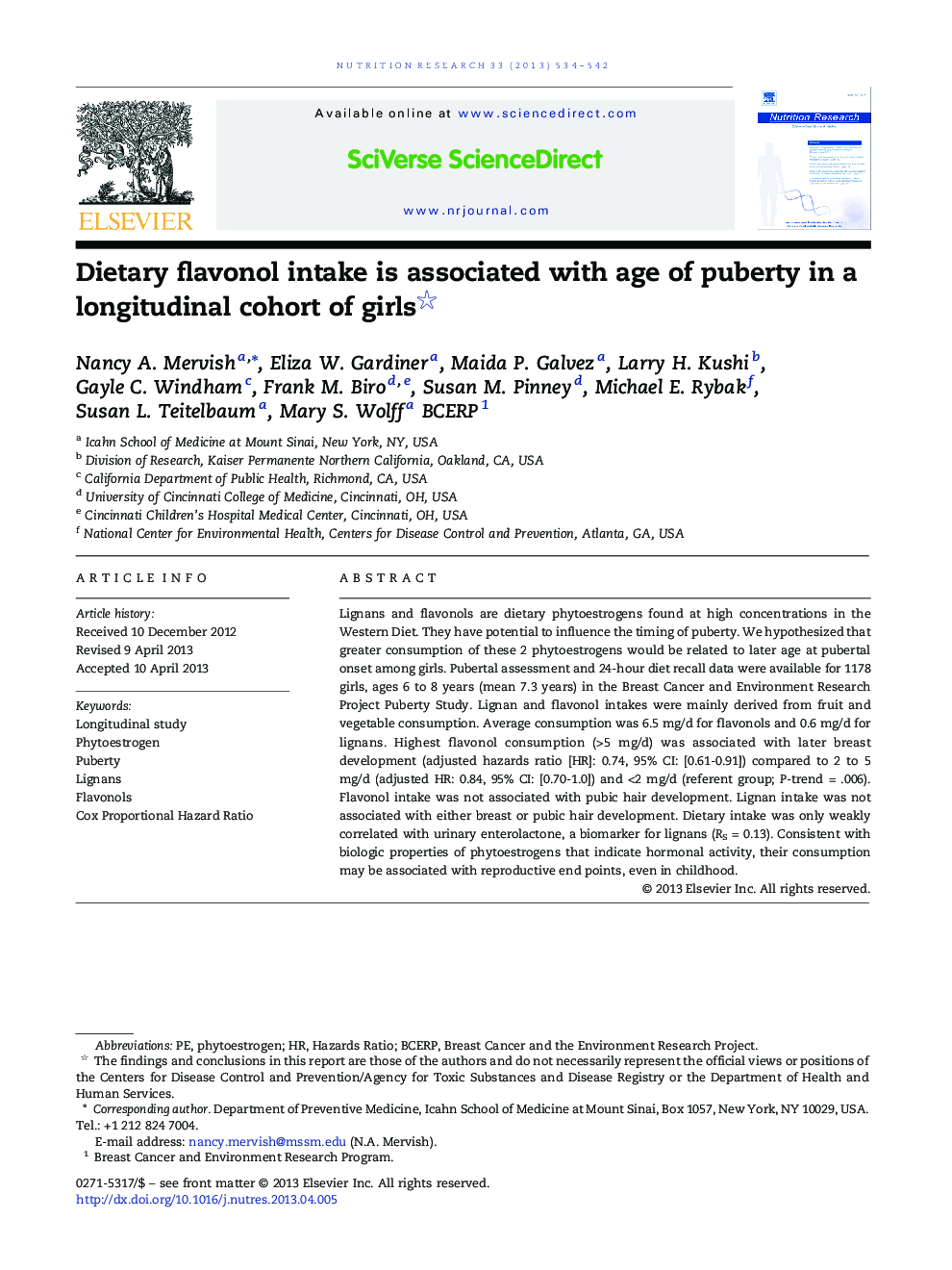| Article ID | Journal | Published Year | Pages | File Type |
|---|---|---|---|---|
| 2808976 | Nutrition Research | 2013 | 9 Pages |
Lignans and flavonols are dietary phytoestrogens found at high concentrations in the Western Diet. They have potential to influence the timing of puberty. We hypothesized that greater consumption of these 2 phytoestrogens would be related to later age at pubertal onset among girls. Pubertal assessment and 24-hour diet recall data were available for 1178 girls, ages 6 to 8 years (mean 7.3 years) in the Breast Cancer and Environment Research Project Puberty Study. Lignan and flavonol intakes were mainly derived from fruit and vegetable consumption. Average consumption was 6.5 mg/d for flavonols and 0.6 mg/d for lignans. Highest flavonol consumption (>5 mg/d) was associated with later breast development (adjusted hazards ratio [HR]: 0.74, 95% CI: [0.61-0.91]) compared to 2 to 5 mg/d (adjusted HR: 0.84, 95% CI: [0.70-1.0]) and <2 mg/d (referent group; P-trend = .006). Flavonol intake was not associated with pubic hair development. Lignan intake was not associated with either breast or pubic hair development. Dietary intake was only weakly correlated with urinary enterolactone, a biomarker for lignans (RS = 0.13). Consistent with biologic properties of phytoestrogens that indicate hormonal activity, their consumption may be associated with reproductive end points, even in childhood.
